This Is Part 1/2 of Building a Sustainable Future with Thermal Energy Networks by Marc Miller, Egg Geo, LLC Modern energy demands are growing, and the need for sustainable, efficient solutions to heat and cool our homes and businesses has never been greater. Enter Thermal Energy Networks (TENs)—innovative systems that distribute and reuse energy to Read more
geothermal
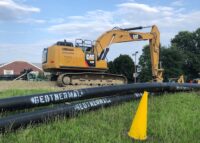
This Is Part 1/2 of Building a Sustainable Future with Thermal Energy Networks by Marc Miller, Egg Geo, LLC
Modern energy demands are growing, and the need for sustainable, efficient solutions to heat and cool our homes and businesses has never been greater. Enter Thermal Energy Networks (TENs)—innovative systems that distribute and reuse energy to reduce costs, cut emissions, and optimize performance.
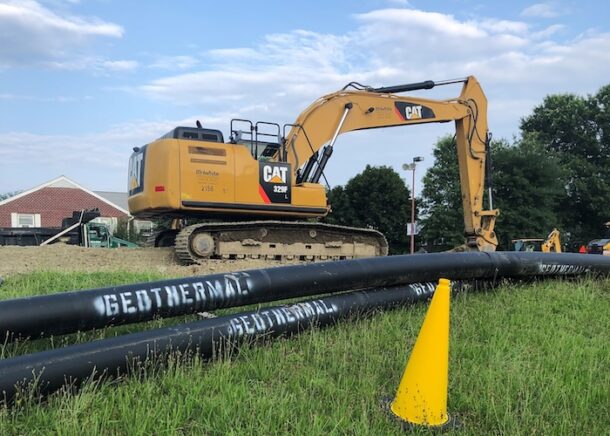
Image: Eversource
This article explores the basics of TENs, their benefits, and real-world applications, helping you understand their potential to transform energy systems for the better.
What Are Thermal Energy Networks?
At their core, TENs are district energy systems that use ambient temperature loops (ATLs) to share heating and cooling between buildings. These loops typically circulate a heat transfer fluid, such as water or a water-propylene glycol mixture, at a temperature range of 50°F to 85°F. By tapping into diverse thermal sources, such as geothermal wells, waste heat recovery, or natural water bodies, TENs provide sustainable, cost-effective alternatives to traditional heating and cooling systems.
Crucially, TENs optimize thermal sharing between stakeholders:
- Consumers exclusively use thermal energy.
- Prosumers both produce and consume energy (e.g., offices that generate heat and reuse it internally).
- Generators supply thermal energy into the network (e.g., geothermal wells or industrial processes).
How TENs Are Different?
Unlike traditional systems like two-pipe or four-pipe setups of district heating and cooling scenarios, TENs use an ambient one-pipe loop that operates at variable fluid flow and temperatures instead of relying on constant temperature and variable flows. Here’s what sets TENs apart:
- One-Pipe Systems manage heating and cooling directly by varying the flow of the fluid of varying temperature circulating the loop.
- Efficiency in Pumping reduces energy waste with self-balancing, simpler designs that eliminate the need for balancing valves. This results in significantly lower operating and installation costs.
- Pump Controlled Instead of Valve Controlled. No balance valves or control valves are used. Flow through decoupled secondary loops is managed by a pump sized to deliver the optimal flow.
Key Benefits of TENs
Energy Efficiency
TENs enable efficient thermal load sharing and shedding. For example:
- Unused heat from one building can be redistributed to another, maximizing energy use across the network.
- Water source heat pumps (WSHPs) leverage the stable temperature of ATLs, operating with coefficients of performance (COP) ratings of 3–5, which translate to lower energy consumption.
Cost Savings
Compared to traditional systems, TENs offer significant financial benefits:
- Lower Installation Costs: With single-pipe systems, there’s less piping, no balancing or control valves, and reduced labor for installation because of less fittings, less tooling and overall less pipe. Additionally there is a single pipe size for the entire loop.
- Reduced Operating Costs: Circulating water at ambient temperatures requires much less pumping power.
Scalability and Flexibility
TENs are highly scalable—there’s no limit to the number of stakeholders that can connect to an ATL. The caveat is that when sizing the loop, it must be sized for the total load to include anticipated future expansion. The more buildings added, the better the system operates due to improved thermal diversity, which counterbalances the temperature cascade effect (where fluid temperatures progressively change as they circulate).
Environmental Impact
Integrating geothermal energy with TENs significantly reduces greenhouse gas emissions. By shifting away from fossil-fuel-based heating systems, TENs pave the way for a green and sustainable future.
Real-World Example
The Eversource Geothermal Pilot in Framingham, Massachusetts, is a first-of-its-kind utility-scale networked geothermal project. Launched in 2024, this system connects 135 residential and commercial buildings, providing ground-sourced heating and cooling through an ambient temperature loop.
Key takeaways from this pilot include:
- Reduced reliance on fossil fuels, replaced with renewable energy from earth’s natural thermal stability.
- Positive feedback from participating stakeholders due to noticeably reduced energy costs and environmental impact.
- A replicable model for other communities to follow.
“This project… is enabling our team to see how we can provide services in a completely new way,” shared Bill Akley, President of Gas Distribution at the project’s groundbreaking.
Challenges and Considerations
No system is without challenges, but TENs offer practical solutions for common concerns.
- Temperature Cascade Effect: Concerns about progressive temperature changes are resolved by system diversity. More connected stakeholders create a smoothing effect that distributes thermal loads more evenly.
- Initial Investment: Modern legislative incentives and community grants, like those funded by the U.S. Department of Energy, are now making upfront costs more affordable for communities adopting TENs.
How TENs Function, a Simple Explanation
In the first illustration below, a TEN utilizing its one-pipe Ambient Temperature Loop (ATL). The TEN consists of a geothermal source/sink, an intermediary heat exchanger, a main loop distribution pump, and three stakeholders: a cooling-dominant data center, a heating-dominant industrial plant, and an apartment building with relatively balanced heating and cooling loads.
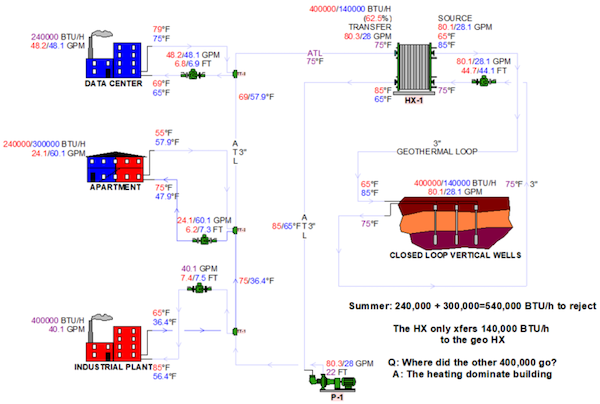
During the summer, the network manages a total heat rejection of 540,000 BTU/h from the apartment building and the data center. However, only 140,000 BTU/h is transferred to the geothermal sink via the heat exchanger (HX-1). This reduction occurs because the network redirects excess heat to the industrial plant, utilizing it for productive purposes rather than rejecting it to the ground.
In winter, the network requires a total of 640,000 BTU/h to meet the heating demands of the apartment building and the industrial plant. Of this, 400,000 BTU/h is supplied by the geothermal source through HX-1, while the remaining 240,000 BTU/h is provided by the data center, offsetting the geothermal demand. This demonstrates the network’s ability to efficiently balance loads by redistributing energy among stakeholders.
In the second example below, we introduce a cooling-dominant load of approximately 10 tons (120,000 BTU/h) to the loop. The system is designed to maintain a leaving heat exchanger temperature of 65°F and a return temperature of 75°F, preserving a 10°F delta T. This consistency is achieved through pump control. By increasing the pump speed and actively managing water flow through the heat exchanger based on temperature, the system sustains the desired 10°F delta T. foundational principles of a TEN.
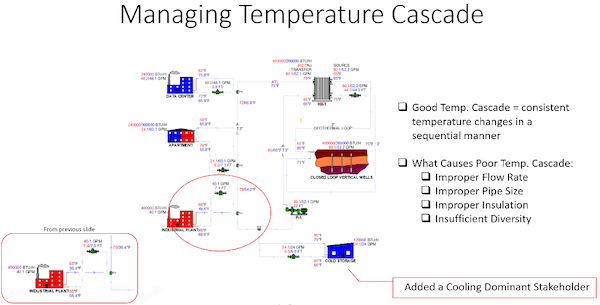
The performance of such a network improves with greater load diversity, i.e., the inclusion of more stakeholders with varying thermal profiles. Additionally, since the system is pump-controlled and does not rely on balancing valves the system is self-balancing. In fact, the temperature cascade effect is shown to improve with an increasing number of thermally diverse stakeholders connected to the loop.
In the previous scenario, the pump’s flow rate was 28 GPM. With the added load, it increases to 54 GPM. Additionally, the inlet temperature to the industrial plant rises from 56.4°F to 69.6°F. Even with the extra 10 tons of cooling load, the pipe size for both the geothermal source/sink loop and the ambient temperature loop remains 3 inches. Importantly, the return temperature to the heat exchanger remains consistent at a 10°F delta T with a 75℉-return design temp.
By examining the ambient temperature loop (ATL), we observe that the temperature range improves significantly, aligning with the target range of 55°F–85°F. Previously, when there were only three loads, the loop’s temperature immediately after the industrial plant was much lower at 36.4°F. Furthermore, the heat transfer through HX-1 and the geothermal well field increases substantially, from 140,000 BTU/h to 260,000 BTU/h, reflecting the additional 10 tons of cooling load.
It is worth noting that this theoretical scenario assumes no other consumers of waste heat, providing just a snapshot in time. In practice, there will always be various heat consumption requirements, such as domestic hot water production, pool heating, or snow melting. Thermal energy networks (TENs) are designed not only for heating and cooling but also for these additional purposes. As a result, the BTUs from cold storage will be utilized across multiple applications beyond simple heating or cooling thus keeping the amount of heat to be rejected by HX-1 to a minimum
This simplified explanation underscores the system’s ability to adapt to increased loads while maintaining efficiency and highlights the versatility of thermal energy networks in meeting diverse energy demands. In part 2 of this article, we will dive into the specifics of how to connect your home or building to the TEN with a decoupled secondary loop and talk about how to control the pump to account for Thermal Diversity and Temperature Cascade Effect.
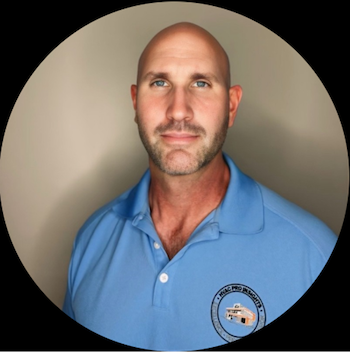 Marc Miller is a Mechanical Systems SME – Educator – Technical Writer – Author – Construction Management Consultant with Home – Egg Geo. He is presently the Lead Author on two textbook projects with Egg Geo. He may be reached at marcm@egggeo.com.
Marc Miller is a Mechanical Systems SME – Educator – Technical Writer – Author – Construction Management Consultant with Home – Egg Geo. He is presently the Lead Author on two textbook projects with Egg Geo. He may be reached at marcm@egggeo.com.

WaterFurnace International, a leading innovator in geothermal and water source heating and cooling solutions, broke ground on a significant expansion of its Fort Wayne, Indiana headquarters on May 30th. The 173,000 square foot building expansion will more than double its current size, offering more flexibility to increase operating efficiencies and production capabilities to meet growing Read more
WaterFurnace International, a leading innovator in geothermal and water source heating and cooling solutions, broke ground on a significant expansion of its Fort Wayne, Indiana headquarters on May 30th. The 173,000 square foot building expansion will more than double its current size, offering more flexibility to increase operating efficiencies and production capabilities to meet growing customer demand. It will also be equipped with multiple features that allow for future state-of-the-art enhancements as the company continues to grow.
Despite the considerable increase in space, the entire facility will continue to be 100% heated and cooled by WaterFurnace geothermal heat pumps that draw from the renewable energy of its existing pond. This commitment parallels the societal shift away from fossil fuels towards more sustainable energy solutions and underscores WaterFurnace’s dedication to environmentally friendly practices.
“This expansion reflects our commitment to innovation, sustainability, and the community. We’re investing in this 14-million-dollar project because we’re committed to growing as a renewable technology leader from right here in Fort Wayne,” said
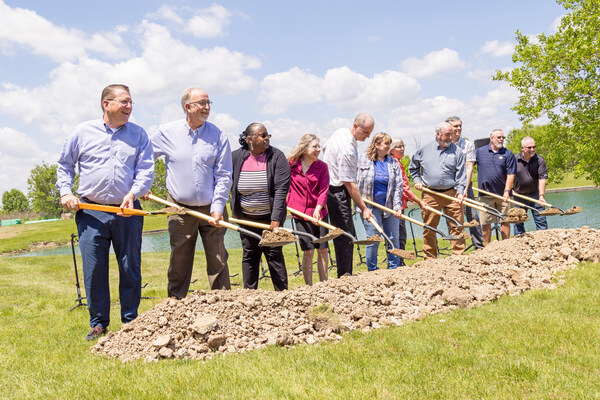
John Thomas, CEO with 30 year WaterFurnace employees (from left to right) Bob Brown, Tonsha Woods, Elaine Shearer, Curt Morton, Julie Mllage, Suzanne Cross, Tom Kinder, Chris Mann, Gregg Tapp, and Luke Goings.
CEO of WaterFurnace International, “With 320 dedicated employees, we are poised to lead the industry with our advanced products and exceptional service as the demand for sustainable energy solutions continues to rise.”
WaterFurnace’s expansion comes on the heels of two record-breaking years, driven by a growing demand for renewable energy technologies and the currently available 30% federal tax credit for geothermal systems. The company has built a reputation as an industry leader, known for its exceptional production efficiency, with unmatched lead times of just 3-5 days from order to shipment.
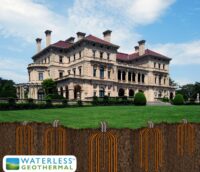
Geothermal heating and cooling is a well-established technology; it’s been around in simplistic forms for more than half a century and has developed at an impressive rate to become a technology that is providing real solutions for decarbonization and grid management. In its years of growth and innovative development, geothermal has taken on many different Read more
Geothermal heating and cooling is a well-established technology; it’s been around in simplistic forms for more than half a century and has developed at an impressive rate to become a technology that is providing real solutions for decarbonization and grid management. In its years of growth and innovative development, geothermal has taken on many different forms and variations, all of which have their own unique benefits.

The Vanderbilt Breakers Mansion saves $36,000 a year with Direct Geothermal Exchange.
The first recorded closed-loop geothermal design installed was a water-free direct exchange geothermal system in 1945. Robert C. Webber (1911-1984) is acknowledged by most to be the inventor of the ground-coupled heat pump system. In fact, according to a September 1948 issue of “The Refrigeration Industry,” Webber was the first to heat his seven-room home in Indianapolis by reversing the cycle on his home freezer. The issue featured Webber as The Refrigeration Industry’s “Man of the Month.” Webber’s “freezer in reverse” was also featured in Ripley’s Believe it or Not in 1948.
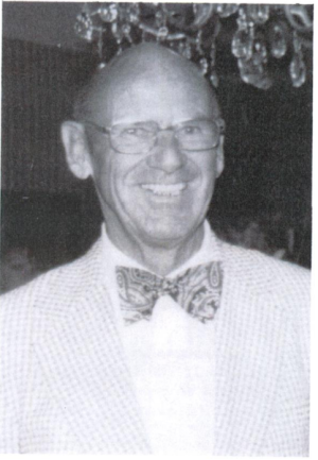
Caption: Robert C. Webber (1911-1984)
Direct geothermal exchange (DGX) waterless geothermal systems, also known as direct exchange systems, offer an innovative and sustainable way to heat and cool your home without requiring water in the loop for heat exchange. Unlike many other types of systems, DX uses a closed-loop refrigerant circuit to release heat from under our feet, eliminating the need for water that other systems require. One of the most vital benefits of Direct Exchange Waterless Geothermal is how efficiently it produces year-round temperature control using safe, reliable refrigerants.
There are many pioneers within the sustainable and renewable energy field, one of which is Bill Buschur, President of Total Green Manufacturing. Bill is a recognizable figure within the geothermal industry, and within the niche of waterless geothermal, with a history in the development of the technology used today. For reference, back in 1980, EarthLinked Technologies (ETI) established itself as a research company in the geothermal industry, becoming the original direct exchange manufacturer. It continued to have great success over the years as it carved out a niche in the geothermal industry. ETI partnered with Total Green Mfg. for five years, and Total Green acquired the 38-year-old DGX Manufacturing company.
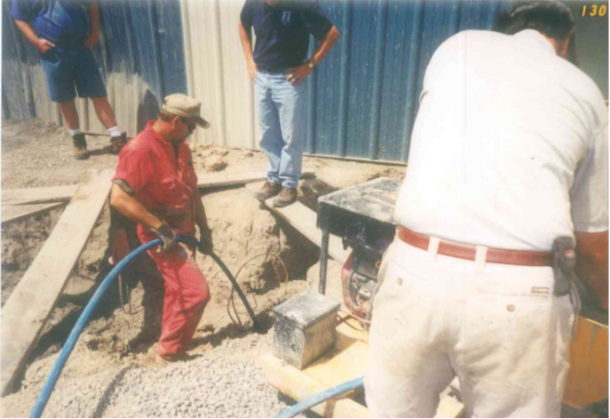
Total Green Crew installs a DGX system.
A little history
“At around 12 years old, I began to ride along with my father in the service truck and I would run back and forth from the truck to get him tools or the parts he needed to make the repairs,” Buschur shared with us, “As I got a little older, I began building geo ground loops. I remember we had two football practices a day, and I would come home and build loops for the rest of the day. Eventually, I began to go to the job site with other crew members and help with the installation process.”
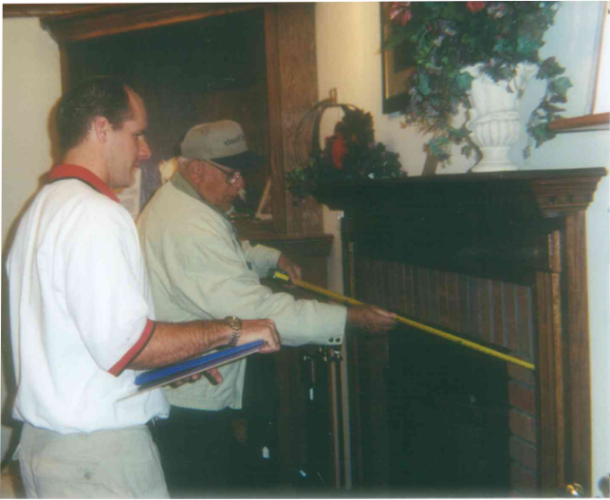
Young Bill Buschur working on site.
One of the keys to innovation is passion, and Bill Buschur has no issue with showing his passion through actions and incredible results. Bill has grown his business from a hard-working crew of only four people to becoming the largest direct exchange geothermal contracting company in the U.S., installing over 100 DX systems on a yearly basis.
Establishing the Waterless® brand was no small feat for Bill, but after earning a degree in Business Management and a refrigeration certification, topped off by 30 years of experience in geothermal heat pump technology, he’s become the driving force behind the biggest name in Direct Geothermal Exchange nationwide.
Quality is vital in any field, but Bill has ensured that his geothermal direct exchange units are to the highest standard, stating, “Dad always taught us that ‘If you don’t do things right the first time, you’ll end up doing it again’”. So we made sure we didn’t cut any corners when it came to Designing and Installing a geothermal system.”. This has been a key factor in how effectively Total Green has kept up with the latest technology.
At the end of the day, the million-dollar question is, “Are direct exchange waterless geothermal systems as efficient as water-based geothermal systems?” The answer is yes. Past criticisms of DX systems have primarily revolved around the question of environmentally friendly refrigerants. Today modern DX systems use advanced refrigerants that are both environmentally friendly and efficient with heat transfer, which will enhance the performance of the system altogether.
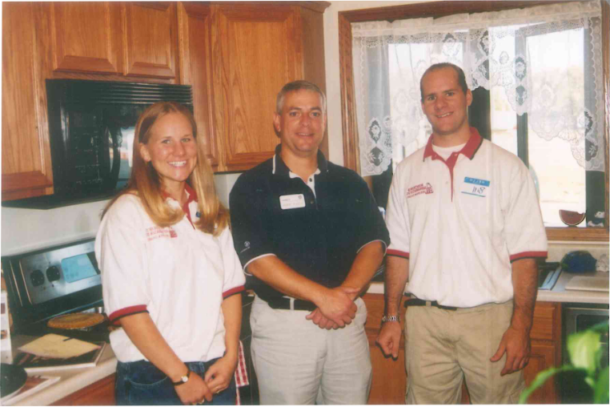
Bill Buschur in his younger years learning the trade (right).
We’re fortunate to have so many diverse options when considering which geothermal system to choose from, accompanied by so many industry pioneers behind each system. As we continue to push for the world to embrace and prioritize sustainability and energy efficiency, minimizing negative environmental impact and using the natural resources given to us, we should make a conscious effort to do so as one piece of that ever-forming puzzle. Any and every geothermal system contributes to a brighter, greener, world-changing future for us and generations to come.
We are on the same team, we are in the same boat, and we are a part of the geothermal heat pump revolution, changing the world for the better.
 Mimi (Hannah) Egg is a Social Media Marketing Consultant with a passion for writing and researching. She has overseen the social media accounts for multiple private and corporate organizations and is constantly learning new ways to understand and optimize demographic outreach and form beneficial business connections through social networking for her clients. She can be reached at Mimieggshell@gmail.com
Mimi (Hannah) Egg is a Social Media Marketing Consultant with a passion for writing and researching. She has overseen the social media accounts for multiple private and corporate organizations and is constantly learning new ways to understand and optimize demographic outreach and form beneficial business connections through social networking for her clients. She can be reached at Mimieggshell@gmail.com
Ontario, Calif. — The Radiant Professionals Alliance (RPA) and International Ground Source Heat Pump Association (IGSHPA) have entered into a memorandum of understanding with the mutual goal of promoting and advancing technological innovations of geothermal systems. The partnership will coordinate RPA, IGSHPA and its respective members with technical activities coordination, research, education, advocacy, publications and leadership Read more
Ontario, Calif. — The Radiant Professionals Alliance (RPA) and International Ground Source Heat Pump Association (IGSHPA) have entered into a memorandum of understanding with the mutual goal of promoting and advancing technological innovations of geothermal systems. The partnership will coordinate RPA, IGSHPA and its respective members with technical activities coordination, research, education, advocacy, publications and leadership for more sustainable building operations and the green economy.
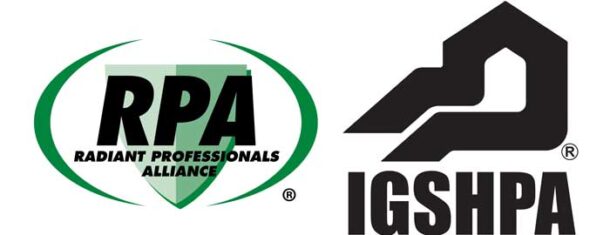
The RPA and IGSHPA will support the geothermal industry on providing opportunities to participate in codes and standards development, guidelines, policies, and position statements developed on technical subjects as they relate to geothermal and radiant/hydronic developments. They will collaborate in the development of research related to the design and construction of radiant systems for geothermal applications and promote research in areas where results will add to the body of knowledge in the conservation of natural resources, increasing energy efficiencies and sustainability, and improving public health and safety.
“This collaboration brings the geothermal industry together for consistency in the approach, installation, and guidance of geothermal systems,” IAPMO CEO Dave Viola said. “IGSHPA and RPA, as representatives of the geothermal and radiant/hydronics industries, will work together to provide useable content that will not only help drive the industries forward but also protect the health and safety of the public.”
“With the expected rapid expansion of the geothermal (ground source) heat pump industry, consistency of design and installation will be crucial to ensure quality installations and sustained growth,” IGSHPA Executive Director Jeff Hammond said. “This collaboration helps leverage the strengths of both organizations to provide the best resources of the radiant/hydronic and geothermal industries to our members.”
Founded in 1987, the International Ground Source Heat Pump Association (IGSHPA) is a nonprofit, member-driven organization established to advance ground source heat pump (GSHP) technology on local, state, national and international levels. With its access to the most current advancements from the ground source/geothermal heat pump industry via its diverse membership base of over 800 members and its industry alliances, IGSHPA is the ideal bridge between the latest technology and the people/organizations who benefit from these developments.
Headquartered in Ontario, California, the Radiant Professionals Alliance (RPA) is an international trade association established for the purpose of providing superior leadership and fostering the awareness of innovative technology through comprehensive educational activities, products, codes and standards, and public awareness initiatives with regard to the radiant and hydronic heating and cooling industry.

Leading U.S.-based manufacturer of water heaters and boilers announces upcoming appearance at MCEE Show in Montreal Bradford White Water Heaters, an industry-leading manufacturer of water heaters, boilers and storage tanks, will showcase its diverse range of innovative, high-performing and efficient products at the MCEE Show in Montreal April 19-20. “The MCEE Show is one of Canada’s premier Read more
Leading U.S.-based manufacturer of water heaters and boilers announces upcoming appearance at MCEE Show in Montreal
Bradford White Water Heaters, an industry-leading manufacturer of water heaters, boilers and storage tanks, will showcase its diverse range of innovative, high-performing and efficient products at the MCEE Show in Montreal April 19-20.

“The MCEE Show is one of Canada’s premier events for building professionals,” said Mark Williamson, general manager and sales director for Bradford White Canada. “We’re looking forward to connecting with attendees and sharing first-hand demonstrations of our reliable, high-quality solutions. As our industry evolves, we’re committed to delivering proven solutions that allow distributors and contractors to elevate their service in order to thrive and succeed.”
Representatives from Bradford White Water Heaters will be available at Booth #1809 during the MCEE Show. The following Bradford White products will be on hand as well as representatives to provide informative product overviews for all visitors:
- Infiniti® GR Tankless Water Heaters: The ENERGY STAR®-certified Infiniti® GS tankless water heater offers energy efficiency, high performance and cutting-edge features, including a robust stainless steel heat exchanger, high temperature setting of 180 degrees, cascade rack installation and multiple venting options.
- AeroTherm® Series Heat Pump Water Heater: With 50-, 65- and 80-gallon capacity units available, the Bradford White Water Heaters ENERGY STAR®-certified AeroTherm® Series offers value, efficiency and versatility. AeroTherm® Series water heaters are easy to install and maintain and feature the AeroTherm® integrated smart control panel plus five operating modes (heat pump, hybrid, hybrid plus, electric and vacation).
- ElectriFLEX Series™: Bradford White ElectriFLEX Series™ field convertible commercial electric water heaters deliver a fast, reliable solution for commercial customers. Voltage, phase, and kW are field convertible.
- eF Series® Ultra High Efficiency Commercial Gas Water Heater: The ENERGY STAR®-certified eF Series® Ultra High Efficiency Gas Water Heaters feature BMS integration, protective powered anodes, , thermal efficiency up to 97%, ICON HD® controls, direct spark ignition, three-pass fire-tube heat-exchanger system, and an installed T&P relief valve.
- Vitraglas® with Microban®: Visitors will also have the opportunity to learn about Bradford White’s proprietary tank lining, Vitraglas®, now infused with Microban®, a built-in antimicrobial technology.
The MCEE Show, bringing together more than 6,000 building mechanics professionals, is an unmissable and indispensable event in the Canadian industry and an excellent opportunity to develop your business network. Participants emerge from their MCEE Show experience better informed and more productive in order to make their business more profitable.
For more information about Bradford White Water Heaters, visit https://www.bradfordwhite.com.
